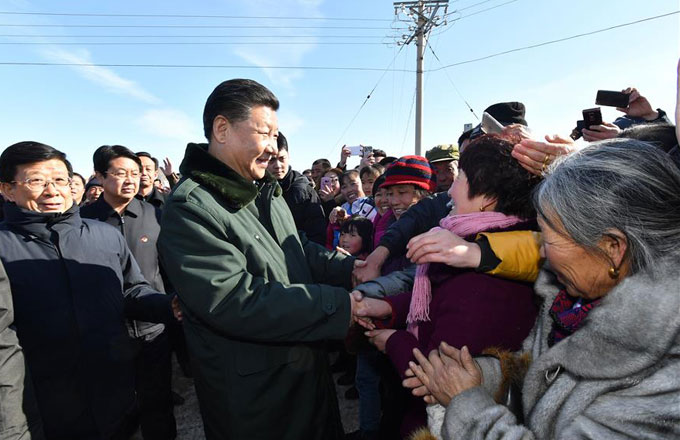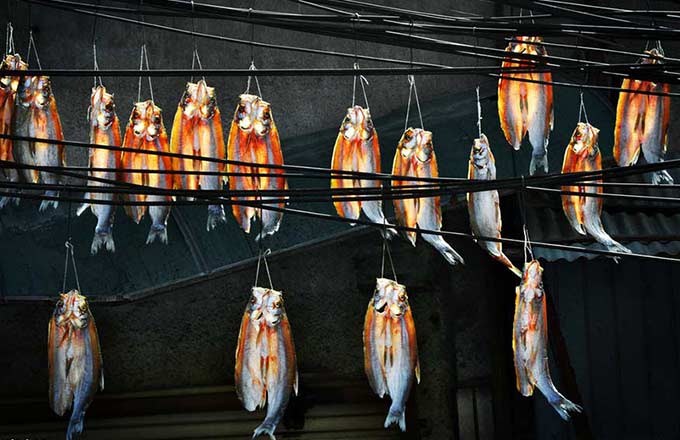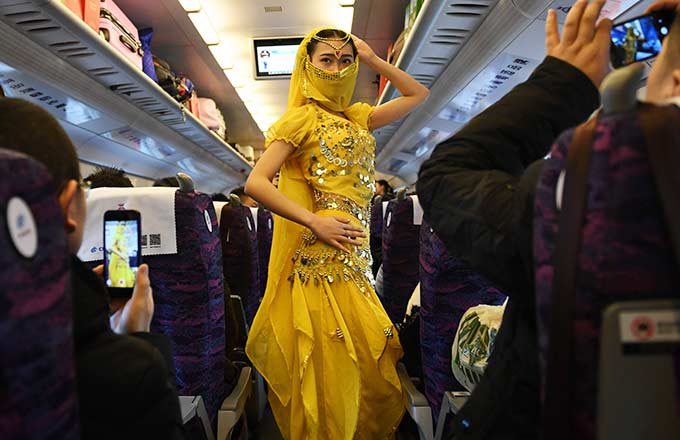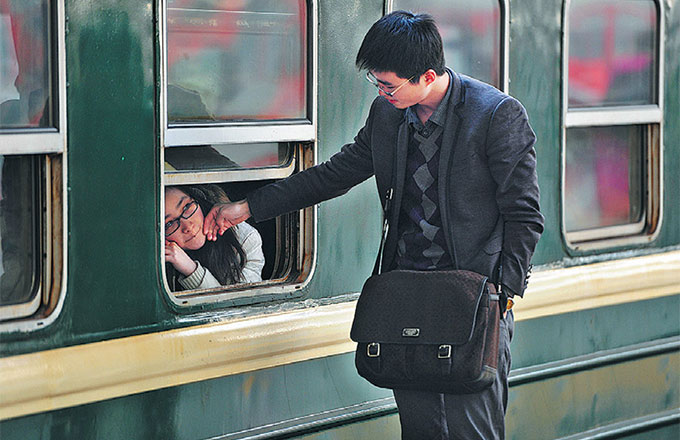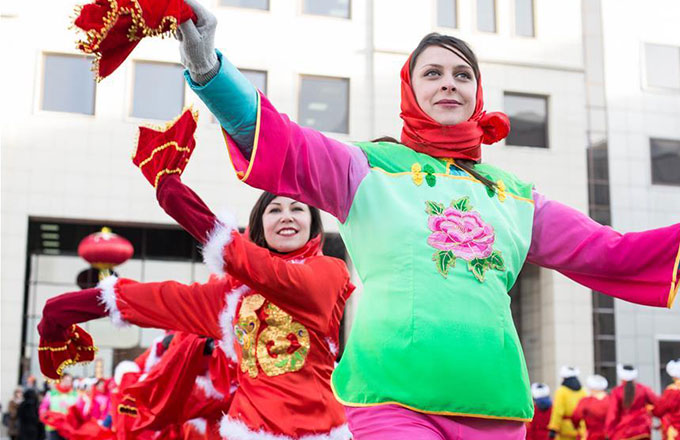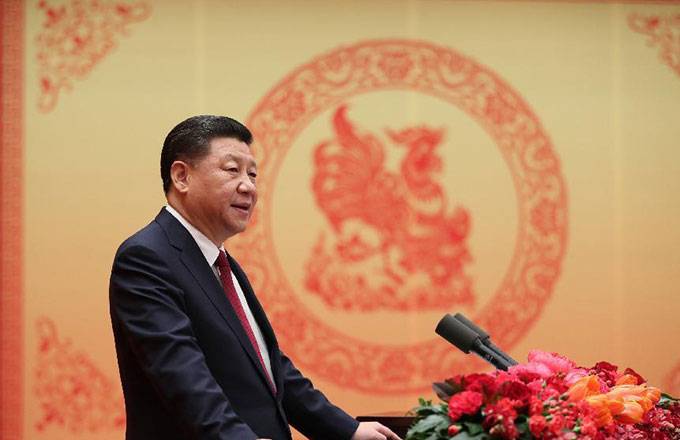Russian ballet shapes China's embrace of dance
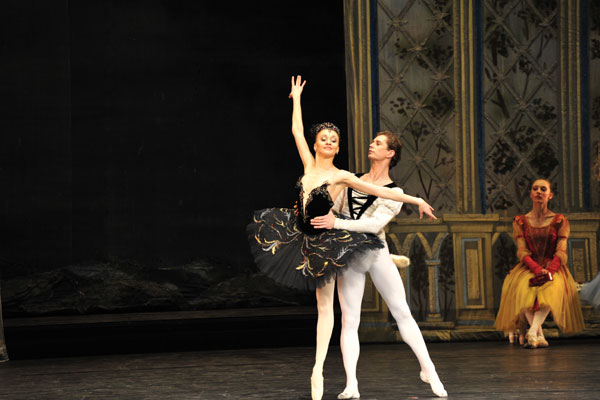 |
|
Dancers from the Russian National Ballet perform Tchaikovsky's Swan Lake in Guangzhou Opera House on Jan 5. Gao Dianhua / for China Daily |
When celebrated ballerina Galina Ulanova performed in Beijing with the Soviet dance delegation in 1952, she danced Les Sylphides, to the music of Frederic Chopin and Robert Schumann.
The same year, 13-year-old Bai Shuxiang joined Dongbei People's Art Theater, which introduced her to dance.
During those years, famous Russian ballet dancers like Ulanova frequently came to China, and their performances attracted large audiences. In 1956, Bai watched ballet for the first time.
"The dancers' special charisma and their physical and spiritual beauty fascinated me. Since then, I have been obsessed with ballet," said Bai, 74.
Born in Xinbin county, Liaoning province, Bai was selected to study at Beijing Dance School - today's Beijing Dance Academy - in 1954, which was China's first professional dance school, established with the assistance of Russian teachers.
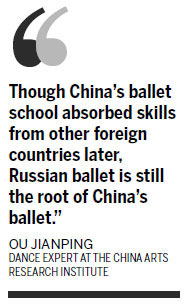 |
Russian dancer and choreographer Pyotr Gusev, who was the school's artistic director from 1957 to 1960, had a strong influence on young students like Bai.
"The Russian teachers were very strict about training. They paid attention to all the detailed movements," Bai said. "The training system and even the school system were built on the Russian model."
In 1957, under the instruction and direction of Russian experts, China staged La Fille Mal Gardee (The Wayward Daughter), a masterpiece created in the 18th century. Bai said the ballet was at just the right level for Chinese dancers, and they benefited greatly from the show.
For Chinese audiences, Swan Lake represents Russian ballet. Then premier Zhou Enlai, who cared deeply about ballet's development in China, once asked Gusev whether China could have its own ballet performance. Gusev said yes, and in early 1958, Beijing Dance School started rehearsing Swan Lake.
"It was the first ballet show China had ever had. Everything was the first time, including costumes, lighting and the stage design," she said.
In 1958, when Bai was in her fourth year of studying ballet, Gusev chose her to practice the roles of both the white swan and the black swan.
Her hard work paid off. After four months of training, she finally mastered all of the difficult dance moves and the unique rhythm of the ballet.
The big day in Bai's life came on July 30, 1958, when China's own version of Swan Lake premiered at Tianqiao Theater in Beijing.
After the show, Gusev came to her and told her, "You are an artist now".
"When I look back at it today, I still feel incredible that Chinese dancers could learn a classical masterpiece like Swan Lake in such a short time," Bai said. "I believe the hard work and the Russian teachers' strict training played an important role in the success."
Russian experts also put forward the idea of combining Russian ballet with cultural elements from China. Based on these ideas, the troupe not only performed classic ballets such as Swan Lake, but also started to create new works in Chinese style, such as Fish Beauty, which was adapted from a Chinese legend. It also marked the beginning of Chinese ballet artists' exploration of incorporating Chinese elements into ballet.
In 1959, the Experimental Ballet of the Beijing Dance School was founded, which was later renamed the National Ballet of China.
The first group of ballet majors from Beijing Dance School became the earliest dancers of the National Ballet of China. Among them was Zhao Ruheng, who later became president of the National Ballet of China.
Zhao said the Russian tutors, such as O.A. Yealina, the first Russian ballet expert in China, also gave training to Chinese teachers.
"In this sense, Russian experts were undoubtedly the founders of Chinese ballet," Zhao said.
At the age of 11, she began her career when the Beijing Dance Academy came to her hometown in the northern port city of Tianjin seeking young talent.
"I remember the first time I saw Russian teachers. I was so impressed by their beautiful outfits, the tutus and silk stockings," she said.
Zhao's career peaked in 1963, when she was named the principal dancer in Swan Lake.
"We received very professional and strict training," said Zhao, 69. Besides dance, students there also took courses in other subjects, including Chinese, mathematics and fine arts, which developed them into well-rounded and versatile people.
Ou Jianping, a dance expert at the China Arts Research Institute, said that while Russian ballet built the foundation for China's ballet development, today it's still widely enjoyed and influencing Chinese audiences and ballet schools.
Ou said that among all the foreign ballet troupes that perform in China every year, around 80 percent come from Russian-speaking countries.
"Though China's ballet school absorbed skills from other foreign countries later, Russian ballet is still the root of China's ballet," Ou said.
chennan@chinadaily.com.cn




